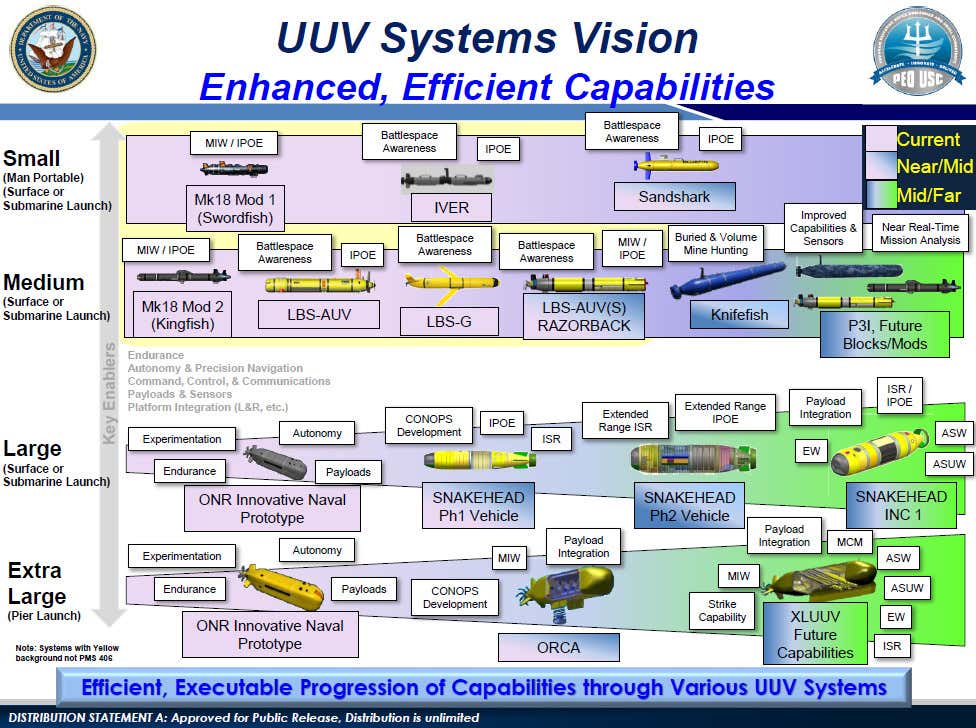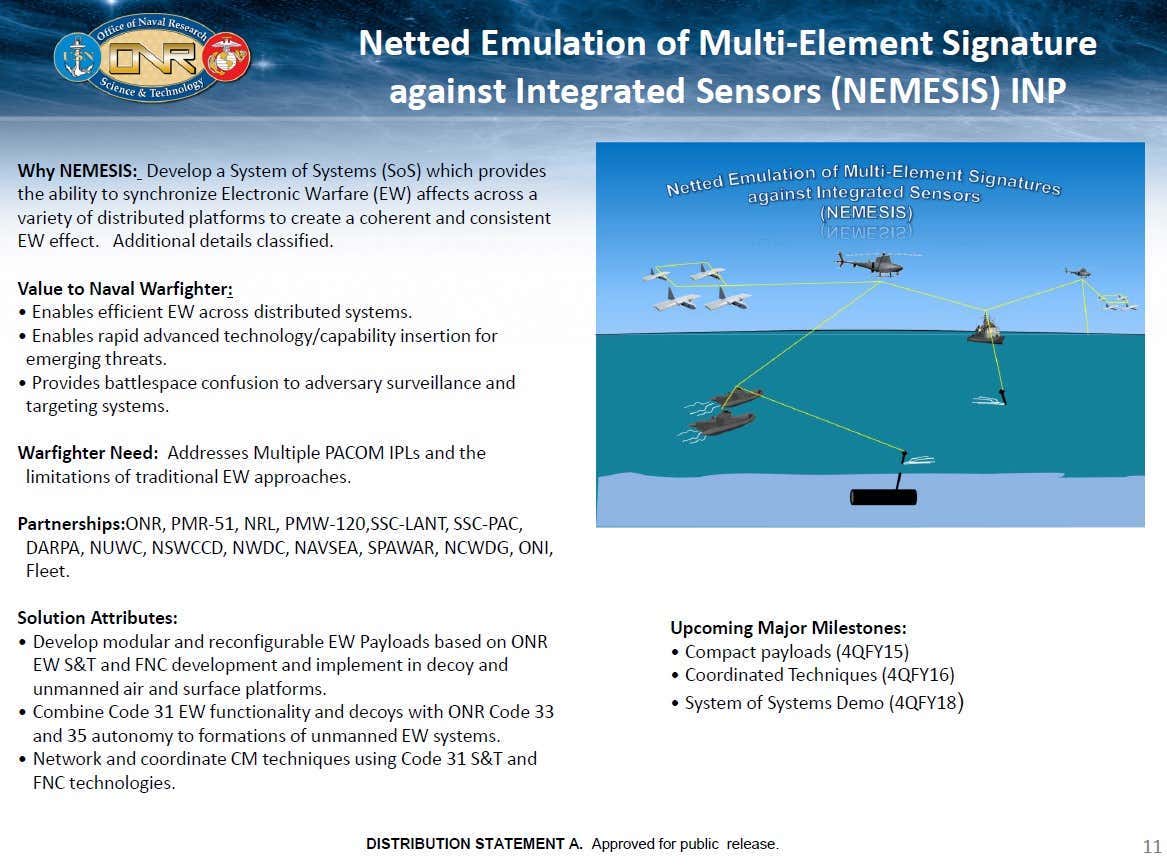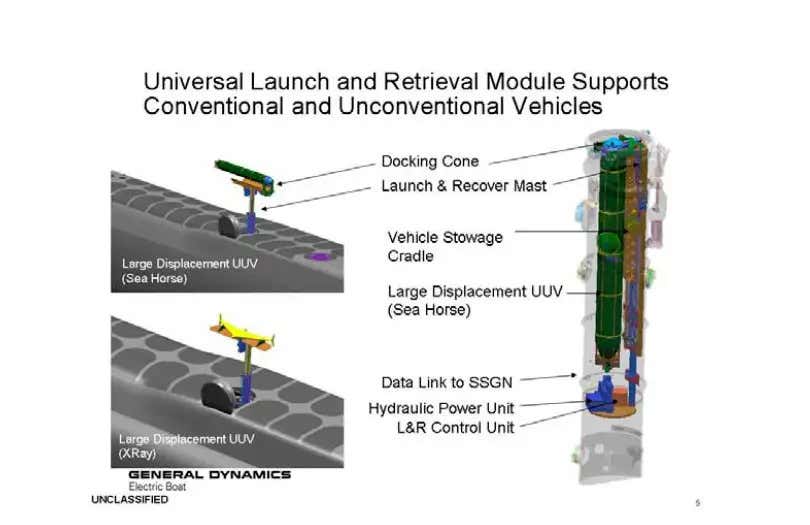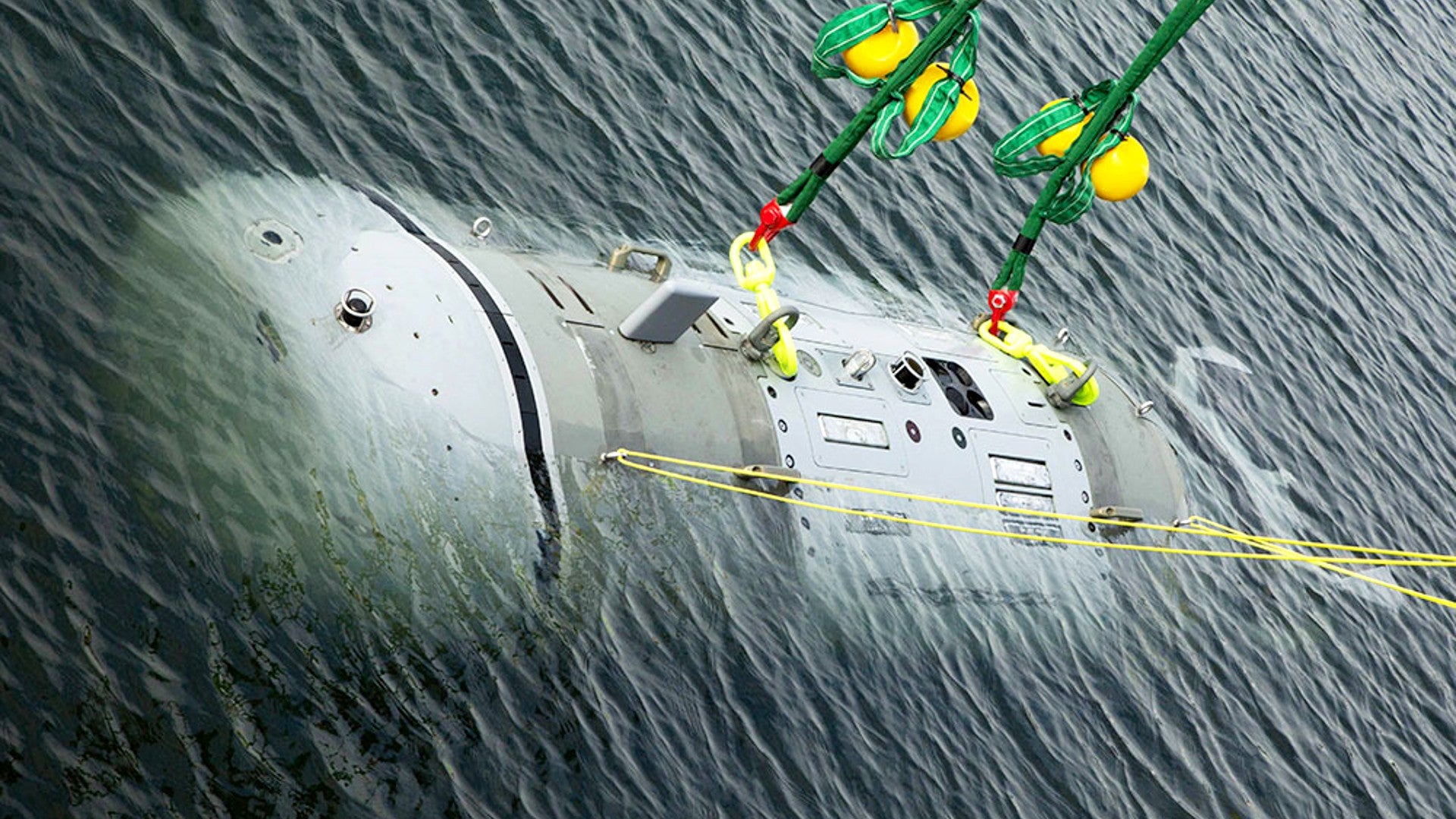The U.S. Navy has offered a glimpse at its new Snakehead Large Displacement Unmanned Undersea Vehicle (LDUUV) by publishing pictures taken during the christening of one of the vehicles. The service wants these drones, which its Dry Deck Shelter-equipped nuclear-powered submarines will be able to launch and recover underwater, to initially be able to scout ahead or monitor certain areas, as well as perform other intelligence-gathering missions.
The images of the Snakehead’s christening were published this week by the Naval Undersea Warfare Center (NUWC) Division Newport and the Program Executive Office Unmanned and Small Combatants (PEO USC). The vehicle was christened at the Narragansett Bay Test Facility on February 2.

During the christening, Capt. Pete Small, the program manager for Unmanned Maritime Systems, said he has been “blown away by the team of subject matter experts and the complexity and technical rigor of the project” since joining in 2018.
Christopher DelMastro, head of NUWC Division Newport’s Undersea Warfare Platforms and Payload Integration Department, added that the christening marks a significant milestone for the Navy’s UUV plans, one that was nearly twenty years in the making. “During the winter of 2004, a UUV team from NUWC was at this very pier demonstrating the utility of large vehicles to inform the Navy’s future unmanned vision,” DelMastro said. “Today we have a new team – the Snakehead team – comprised of talented individuals representing the warfare centers, university laboratories, and industry. It was very challenging at times and it was a long and difficult path to get here, but today you succeeded in delivering many firsts for the Navy.”

From what we can tell from these images, the Snakehead seen in the christening ceremony appears to be very much inline with renderings previously shared by the Navy.

Details about Snakehead and the contractors developing it remain scarce. What is known is that the drone is a long-endurance, multi-mission UUV that can be deployed from the Dry Deck Shelter of some of the Navy’s submarines and has been previously described by the service as “the largest UUV intended for hosting and deployment from submarines.” According to a contract awarded in 2019, Snakehead is powered by Lithium-ion Fault Tolerant (LiFT) batteries.

The drone subs have some degree of autonomy thanks to the Navy’s Unmanned Maritime Autonomy Architecture (UMAA) and Common Control System (CCS). These software systems offer operators a common tool for mission planning and execution, as well as monitoring UUVs in the field.

The drone submarines are aimed primarily at Intelligence Preparation of the Operational Environment roles, or IPOE. These missions typically involve collecting information about specific areas or objectives in advance of operations. For UUVs, this would mean using a variety of sensors including side-scan sonar and other bathymetric instruments to map the seafloor and identify obstacles or objects of interest.
This type of intelligence is critical for submarines to help ensure they can safely enter and leave designated areas without being detected or striking obstacles. UUVs in this role can identify potential obstacles or hostile assets in a given area while their host vessels are safely out of harm’s way, or be used to help locate sunken objects or undersea cables. They can also provide critical mapping and other forms of intelligence for maritime special operations raids and larger-scale amphibious operations.
A December 2020 Navy press release announcing the final request for proposals (RFP) for the UUV’s Phase 2 development stated that while initial Snakeheads were intended mainly for IPOE roles, “Future vehicle missions may include deployment of various payloads.” Because Snakehead is designed with a modular, open architecture, new systems or payloads could be rapidly integrated in the future to further expand their capabilities.
PEO USC briefing materials from 2018 show that some of the future payloads the Navy intends for Snakehead include anti-surface warfare (ASUW) and anti-submarine warfare (ASW) systems in addition to electronic warfare platforms (EW).

EW systems would likely require the UUV to operate near the surface or use a buoy or an extendable mast system, but this would still present a much lower risk than a crewed submarine in the same role. Snakeheads equipped with these systems could potentially function as part of the Navy’s secretive EW ecosystem known as the Netted Emulation of Multi-Element Signature against Integrated Sensors ecosystem, or NEMESIS. NEMESIS is aimed at developing a ‘system of systems’ that uses highly-networked manned and unmanned aircraft, ships, and submarines to execute highly coordinated electronic attacks and decoy operations across wide geographical areas and against disparate enemy sensors, even creating ‘phantom fleets’ to confuse and distract opponents. Read this past War Zone feature to learn more about this highly revolutionary program.

It’s worth pointing out that it’s not yet clear what submarines might deploy the UUV in the future, but the Navy has previously stated that Snakehead will fully integrate with Modernized Dry Deck Shelter (DDS) and Payload Handling System-equipped submarines. Currently, DDS can be equipped by the Navy’s four Ohio-class guided-missile submarines, or SSGNs, and at least six Virginia-class submarines. Additionally, the unique Seawolf-class spy submarine USS Jimmy Carter features a large “ocean interface” section that can be used to launch UUVs.

The Ohio-class SSGNs, in particular, are capable of deploying a wide range of unmanned assets for various missions. It has been proposed that UUVs can be launched and recovered from the SSGNs using the Universal Launch and Retrieval Module, an elevator-like device that extends from modified Trident missile tubes to transport payloads in and out of the submarines. You can read all about the Ohio-class SSGNs and their revolutionary capabilities in this past War Zone feature.

Snakehead isn’t the only LDUUV the Navy has been testing and evaluating on a more experimental basis in recent years. Other projects include the Boeing Orca (technically an XLUUV), and the Large Training Vehicle 38 test platform. The Navy even stood up its first-ever dedicated underwater drone unit in 2017, Unmanned Undersea Vehicle Squadron One, or UUVRON 1, in order to develop and test these new platforms.
The fact that the Navy has now christened one of the drones shows the service is continuing to move forward with its plans to operate a larger number of unmanned vehicles both above and below the waves. Navy leadership has signaled that unmanned systems are critical for its future operations, helping it move towards a more distributed concept of operations in which large numbers of unmanned assets add additional operational capacity, presence, and even unique capabilities with less personnel and logistical demands.
Just this week, Chief of Naval Operations Adm. Mike Gilday said that the service could begin incorporating large unmanned platforms into the fleet within the next five years. “In the long run, the goal is … to put ourselves in a position where we can scale those platforms and into the 2030s have unmanned in larger numbers available to the commanders,” Gilday said, according to Breaking Defense.
Snakehead and other large UUVs like it have the potential to add significant tactical capabilities to the service’s already capable fast attack and guided-missile submarine fleet. Now that a Snakehead has been christened, it’s likely we’ll see the drone sub make more appearances as the Navy moves it towards some sort of operational capacity. Regardless, when it comes to undersea warfare, it is becoming clearer with each passing day that unmanned platforms will become essential to dominating the battlespace below the waves.
Contact the author: Brett@TheDrive.com
